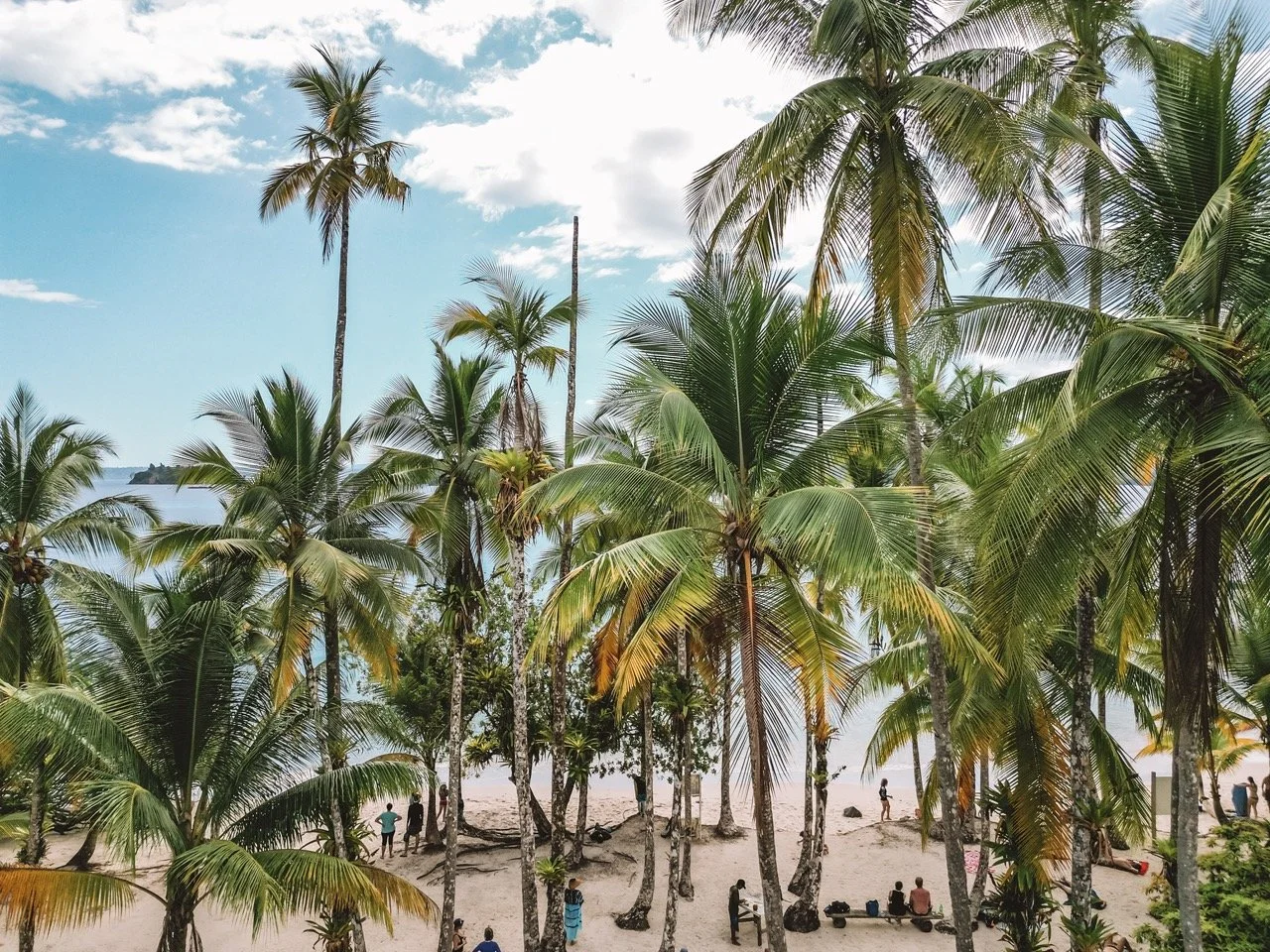Coiba Island 101: Everything You Need to Know About Exploring Our Favorite Island Paradise
Hop on a boat from Santa Catalina, Panama, and sail west for about an hour to discover one of Central America’s hidden gems—Coiba Island National Park. Nestled in the Gulf of Chiriquí, Coiba is a UNESCO World Heritage Site, famous for its incredible biodiversity, crystal-clear waters, and unique history. Often referred to as the “Galapagos of Central America,” this tropical paradise offers world-class diving, snorkeling, and a chance to experience pristine wilderness both above and below the water.
If you're planning a trip to this extraordinary island, keep reading for everything you need to know about exploring Coiba Island—from its history and biodiversity to how you can experience it firsthand.
The Natural Wonders of Coiba Island National Park
Coiba Island National Park is made up of 38 islands, with the largest and most well-known being Isla Coiba. The park has been a UNESCO World Heritage Site since 2005, thanks to its unparalleled biodiversity. Coiba’s isolation from the mainland has allowed its wildlife to evolve uniquely, similar to the famed Galapagos Islands.
The Smithsonian Tropical Research Institute describes Coiba as “a real-time experiment in evolution,” where animals adapt in surprising ways. Larger species shrink, smaller ones grow larger, and many animals develop unique traits due to what scientists call the “island effect.”
One reason Coiba Island National Park Is So Unique: Wildlife on Land
The island is home to:
147 bird species, including rare ones like crested eagles and scarlet macaws.
Endemic species such as the Coiba Island agouti and the mantled howler monkey.
Other animals like crocodiles, sea turtles, and monkeys.
Marine Life
The surrounding waters are a diver’s dream, with over:
750 species of fish
30 species of sharks, including whale sharks
20 species of whales and dolphins
The vibrant coral reefs make Coiba one of the best dive sites in the world, attracting marine life enthusiasts from all over the globe.
How to Visit Coiba Island National Park
Starting Point: Santa Catalina
The best way to access Coiba is from Santa Catalina, a small fishing town renowned for its surf and proximity to the island. Several tour operators in Santa Catalina offer eco-friendly excursions to Coiba. Visiting Coiba Island is simple from here, which is why it’s one of the most popular launching points for Coiba adventures. If your retreat is interested in adding a Coiba Island experience to your Panama stay, let us know, and we’ll arrange everything!
Popular Activities on Coiba Island
Scuba Diving and Snorkeling
Dive or snorkel in the park’s vibrant waters, where you can spot colorful coral reefs, tropical fish, and even whale sharks. Coiba is a bucket-list destination for divers worldwide.Wildlife Watching
Explore the island's trails or relax on its pristine beaches while observing its fascinating wildlife. Don’t miss the scarlet macaws and howler monkeys!Overnight Stays
Stay overnight at the ANAM ranger station, where modest two-room cabins allow visitors to fully immerse themselves in the island’s untouched beauty.
Tips for Planning Your Trip to coiba Island
Permits are required to enter the park and can be arranged through tour operators.
The boat ride to Coiba takes about an hour and often includes sightings of playful dolphins.
Pack essentials like sunscreen, bug repellent, and sturdy shoes for hiking.
Why Coiba Island National Park Should Be on Your Bucket List
From its rich history to its stunning biodiversity, Coiba Island National Park offers an unforgettable escape into nature. Whether you're a diver, wildlife enthusiast, or simply looking for a secluded paradise, Coiba has something for everyone. This incredible underwater world is one of the main reasons travelers love snorkeling and diving in Coiba
To explore Coiba Island and everything Santa Catalina has to offer, contact us to plan your adventure. Don’t miss out on this once-in-a-lifetime experience in one of Central America’s last true wildernesses!
Whether you’re visiting Coiba Island for diving, wildlife, or pure solitude, the experience is unlike anywhere else in Central America.
Want to see it for yourself during a retreat here in Santa Catalina? Book now!



